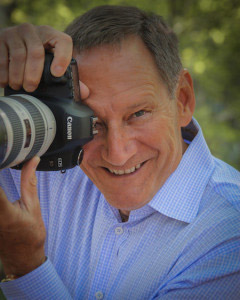Diary of a Photographer, Part 2
Children are great teachers; let us learn from them.
I’ve been a children’s photographer for over 28 years. We photograph approximately 6,000 children per week during the school year. Needless to say, we’ve had thousands of interesting and amazing experiences.
Recently, I was photographing a large middle school in Massachusetts. As I was photographing several autistic students, one classmate was yelling loudly, uttering words and making it very clear she did not want to cooperate. She threw herself on the ground behind me; the staff was challenged by her sudden change in behavior as they tried their best to calm her down.
Meanwhile, I finished getting the smile I wanted from her classmate. I turned around to face the young girl who was still on the ground with her hands covering her face. I asked the staff if it was okay to interject and talk with her. She was definitely frightened by the thought of having her picture taken.
I quietly knelt down beside her, said “hello” and told her my name. I showed her the recent photograph on the back of my camera and asked her if she knew the girl. She took her hands away from her face, looked up and said, “Yes”. She had a little more calmness in her voice and she looked me right in the face.
I smiled and said that her friend had a pretty smile, she agreed. I told her that she had beautiful smile too, and a very nice dress on. I extended my hand to her and said, “Would you like your picture taken, too?” She immediately took my hand, got up off the ground, and walked over to where I wanted her to sit. I continued to talk and interact with her, giving her compliments and showed her her beautiful smile on my camera. The staff looked on in amazement with her sudden change in behavior.
Her reaction and relaxed smile spoke volumes to me. She was proud of her accomplishment.
“What matters is that you take the time and show them that you care.”
Quite simply, it takes patience, a few kind words, and really listening to what they’re saying, with or without words to make a real connection with the person inside.
It also takes an understanding of the situation, as many children (and adults) get anxious or stressed with strangers or an unfamiliar situation. That day, the real goal was to make them feel comfortable, which can be a complex task, but it starts with the basics of being kind, patient, and listening, on many different levels.
It doesn’t matter who they are, or how stressed they might be. It also doesn’t matter whether they have autism or not. What matters is that you take the time and show them that you care. The same principles apply to all children (and adults). It’s important to understand that autistic children, and others with learning disabilities, may interpret the world differently, and that all children respond more comfortably with familiarity.
I wish that we could all take the time to stop and learn these lessons from all children. Unfortunately, most of us are caught up in our own worlds. We don’t have the time, or maybe we don’t understand the best way to communicate. Most of us are afraid of things that are not familiar to us; sometimes we’re afraid because we don’t know what to say, or how to say it. People just react out of fear, and “run away”. We’ve all been in that situation.
How do you communicate with a child who is upset, frightened, or anxious with an unfamiliar situation?
For me, it all starts with slowing down, listening and a kind smile.
We can all learn lessons from children if we stop and notice.


